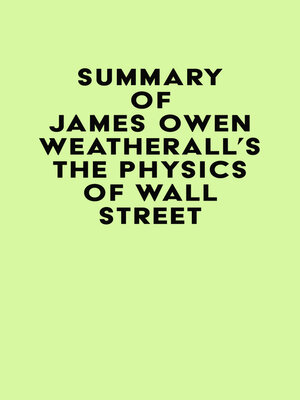
Sign up to save your library
With an OverDrive account, you can save your favorite libraries for at-a-glance information about availability. Find out more about OverDrive accounts.
Find this title in Libby, the library reading app by OverDrive.



Search for a digital library with this title
Title found at these libraries:
| Loading... |
Please note: This is a companion version & not the original book. Book Preview:
#1 The French capital, Paris, was abuzz with progress in the 1890s. The city was home to the Bourse, France's principal financial exchange, and the Palais Brongniart, a palace built by Napoleon as a temple to money.
#2 Paul Samuelson, an economics professor at MIT, was interested in mathematical finance. He had never heard of Louis Bachelier, but he had read his dissertation, which was titled A Theory of Speculation. It contained the mathematics of financial markets, and it was 20 years old.
#3 Cardano was the first person to take a mathematical interest in games of chance. He believed that if one assumed a die was just as likely to land with one face showing as another, one could work out the precise likelihoods of all sorts of combinations occurring.
#4 The French writer Chevalier de Méré was interested in a number of questions, the most pressing of which was how to play dice games. He had an instinct that if you bet that a 6 would get rolled, and you made this bet every time you played the game, over time you would tend to win slightly more often than you lost.






